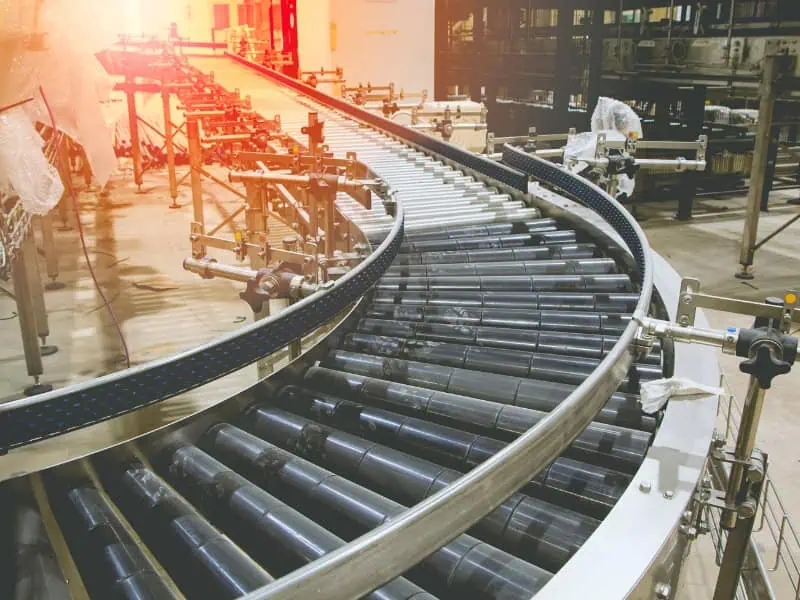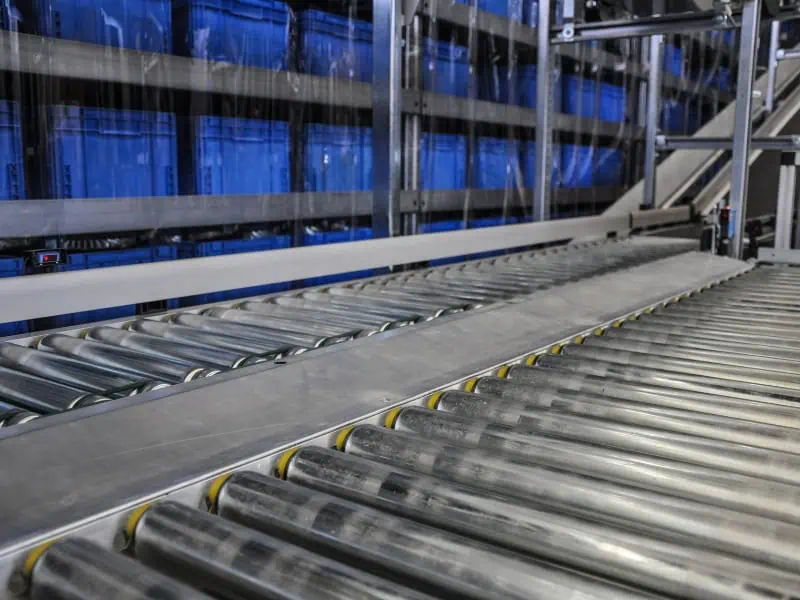In busy Australian worksites, roller conveyor types play a massive role in keeping materials moving efficiently and safely. From warehouses to manufacturing floors, choosing the right setup can make the difference between smooth transfers and constant downtime. Yet, many businesses struggle to select a system that suits their load size, product type, and workflow layout. A poor conveyor match can slow operations, increase wear, and lead to costly replacements. When that happens, your entire handling process hits a snag — literally and financially. But with the right understanding of roller conveyor types, you can avoid those headaches. By looking closely at drive methods, load capacities, and space constraints, you’ll find a system that supports your productivity goals without blowing the budget.
How do conveyors differ in drive method and power?
Roller conveyors are generally split into two main drive categories: gravity-driven and powered. Gravity conveyors rely on a sloped surface and the natural pull of gravity, while powered conveyors use motors or chains to move loads across level surfaces.
The main challenge here is matching power type to workflow. Choosing the wrong drive method can cause uneven speed or product slippage. This can slow production and increase the risk of damage to goods. When comparing drive systems:
- Gravity conveyors are cost-effective and require minimal energy.
- Powered rollers handle heavier loads and provide consistent throughput.
- Chain-driven rollers are well-suited for use with pallets and in industrial applications.
- Belt-driven rollers reduce product marking and noise.
| Drive Method | Power Source | Typical Use | Advantages | Considerations |
| Gravity | None | Packaging & light assembly | Low cost, simple setup | Limited control |
| Belt-driven | Electric motor | Fragile goods | Gentle transfer, low noise | Higher maintenance |
| Chain-driven | Electric motor | Heavy industrial loads | High torque, durability | Requires alignment |
| Line shaft | Centralised drive | High-volume production | Easy integration | Limited load range |
For reliable energy-efficient setups, many Australian operators turn to trusted solutions in roller conveyor hire for seamless site productivity.
What types of roller conveyors are best suited for short-distance gravity flow?

Short runs are where gravity conveyors shine. Their unpowered design makes them easy to install and ideal for areas requiring simple transfer, such as loading bays or end-of-line sorting. However, they struggle with incline accuracy if the floor isn’t perfectly level. Popular options include:
- Steel gravity rollers for durable use in manufacturing.
- Plastic rollers for lighter, moisture-prone applications.
- Skate wheel conveyors for flexible, low-cost product flow.
When your goal is quick movement between short points, a lightweight gravity system does the trick. It’s budget-friendly and low-maintenance, making it ideal for temporary setups or mobile work sites. For complementary systems, explore the best conveyor belt options for efficient warehouse setups.
Which types of roller conveyors support accumulation and precise handling control?
In production or packaging zones, accumulation systems prevent product collisions by automatically spacing items. These are often motorised or zone-controlled roller conveyors. Accumulation rollers are a game-changer for handling delicate or irregularly sized goods. However, poor calibration can lead to uneven product spacing, resulting in stoppages and requiring manual intervention. Features that improve accumulation control include:
- Zone-driven rollers with sensor feedback.
- Pneumatic or motorised clutch systems for start-stop flow.
- Integrated photoelectric controls to manage product gaps.
For enhanced throughput, combining powered zones with smart sensors ensures a consistent flow of items. It’s also worth understanding how belt tension impacts conveyor efficiency to avoid system wear or drift.
How do roller conveyors vary based on load capacity and build durability?
Load and frame type directly affect performance. Light aluminium rollers handle cartons or parcels, while steel and chain-driven rollers are built for pallets and crates. Choosing the wrong frame strength can cause bending, vibration, or early failure. Underestimating load weight is a costly mistake. A system rated for less than your heaviest product will quickly degrade. Common build materials and their benefits:
- Aluminium: corrosion-resistant and easy to reposition.
- Mild steel: strong, affordable, and reliable for medium loads.
- Stainless steel: suited for food-grade or washdown applications.
These options give you a clear path to balancing cost and strength. For most Australian operations, choosing heavier-gauge rollers upfront saves more over time — especially when working with high-volume freight.
What roller conveyors work best for curved or space-limited layouts?
When your workspace is tight, curved conveyors keep goods moving without needing major layout changes. But not every roller type suits curved flow — flat rollers can cause friction and product drift around bends. Curved conveyors often use tapered rollers to maintain consistent product orientation. Depending on your layout, you can use:
- 90-degree curves for L-shaped work zones.
- 45-degree curves for smooth transitions.
- Spiral or flexible conveyors for multi-level routing.
These designs maximise floor efficiency and make better use of warehouse corners. It’s also vital to consider workplace safety guidelines for manual handling when planning these zones — especially when moving loads manually between conveyors.
How do maintenance, hire cost, and lifecycle differ among roller conveyor types?
Different systems have unique maintenance needs. Gravity rollers require little attention beyond cleaning and alignment checks. Powered rollers demand more — especially for chain tension, motor health, and bearing lubrication. Hiring conveyors instead of buying them outright can save upfront costs, particularly for seasonal or project-based work. Frequent maintenance neglect can shorten a roller’s life by half. Maintenance quick facts:
- Grease bearings every 3 to 6 months.
- Replace worn rollers to prevent uneven drive.
- Inspect alignment weekly for powered models.
Hire options often include maintenance support, providing flexibility without the risks of full ownership. For temporary work or site expansion, hiring ensures you stay productive with minimal downtime.
Final thoughts
Selecting the ideal roller conveyor types for your operation comes down to striking the right balance between drive power, load strength, and available space. Choosing wisely ensures smooth handling and reduced downtime, while overlooking these essentials can lead to stalled output and increased costs. Powered rollers work best for steady, high-volume production, whereas gravity systems are a solid choice for short, low-cost transfers. In tighter areas, curved or flexible layouts maximise usable floor space without compromising flow. For many Australian worksites, opting for hire-based setups can keep operations adaptable without the upfront spend. If you’re planning a system upgrade or short-term project, explore how Conveying & Hoisting Solutions can support your next project. Their tailored hire options can help your site stay efficient, safe, and productive.




